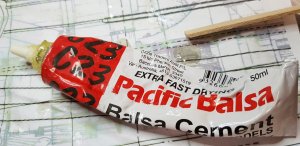Hello Gents!
Quick question... do you have a particular “why” or “when” to use regular wood glue versus instant (CA) glue?
New to this wooden ship building; I have used both methods in my Lancia Armata, and found that the wood glue is great for cleanup and stain absorption, it takes too long to set. CA, on the other hand, is way better for fast dry times, but usually requires more cleanup vs regular wood, and understand stains do not perform as well either.
Any feedback/guidance greatly appreciated!
Quick question... do you have a particular “why” or “when” to use regular wood glue versus instant (CA) glue?
New to this wooden ship building; I have used both methods in my Lancia Armata, and found that the wood glue is great for cleanup and stain absorption, it takes too long to set. CA, on the other hand, is way better for fast dry times, but usually requires more cleanup vs regular wood, and understand stains do not perform as well either.
Any feedback/guidance greatly appreciated!











